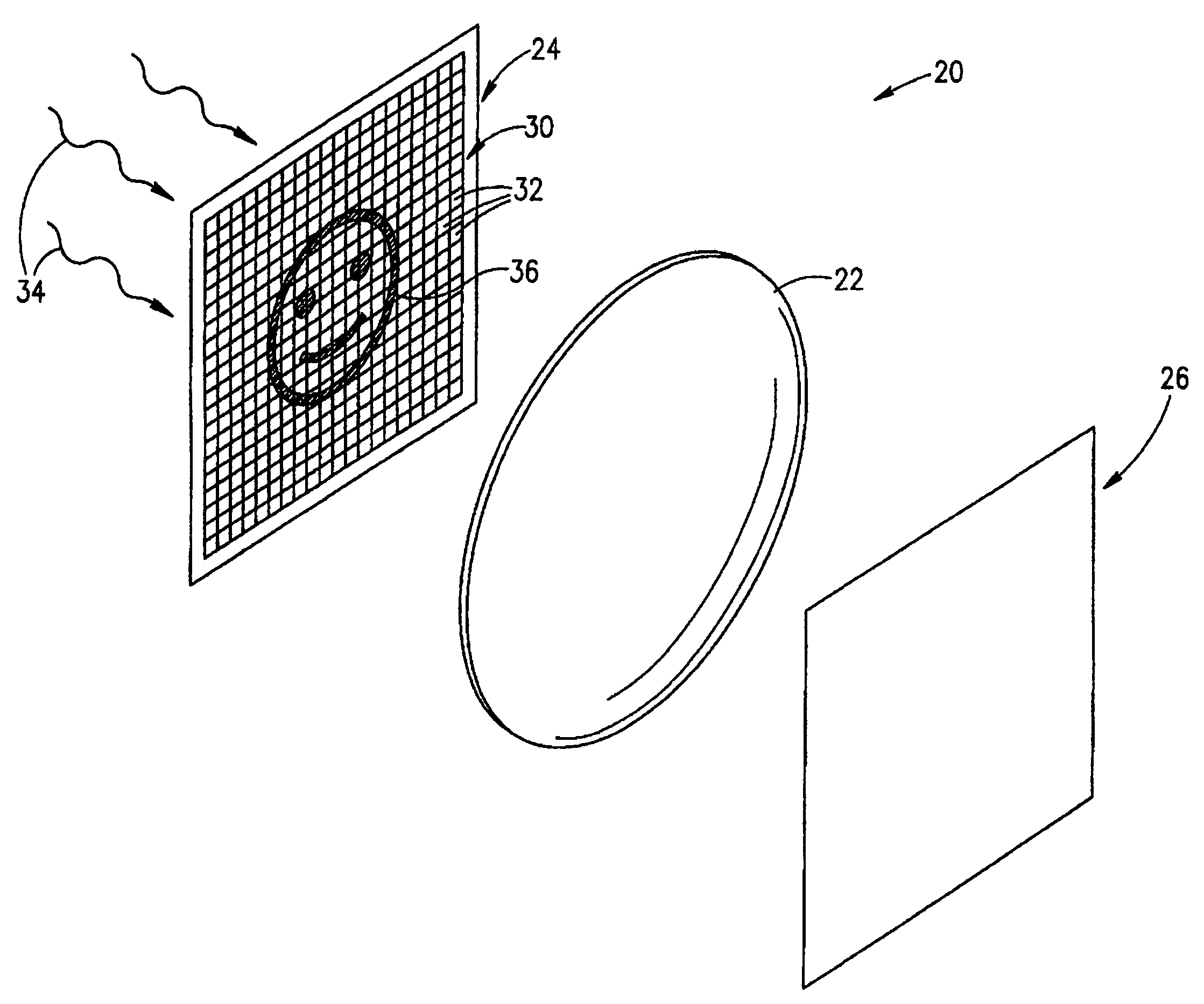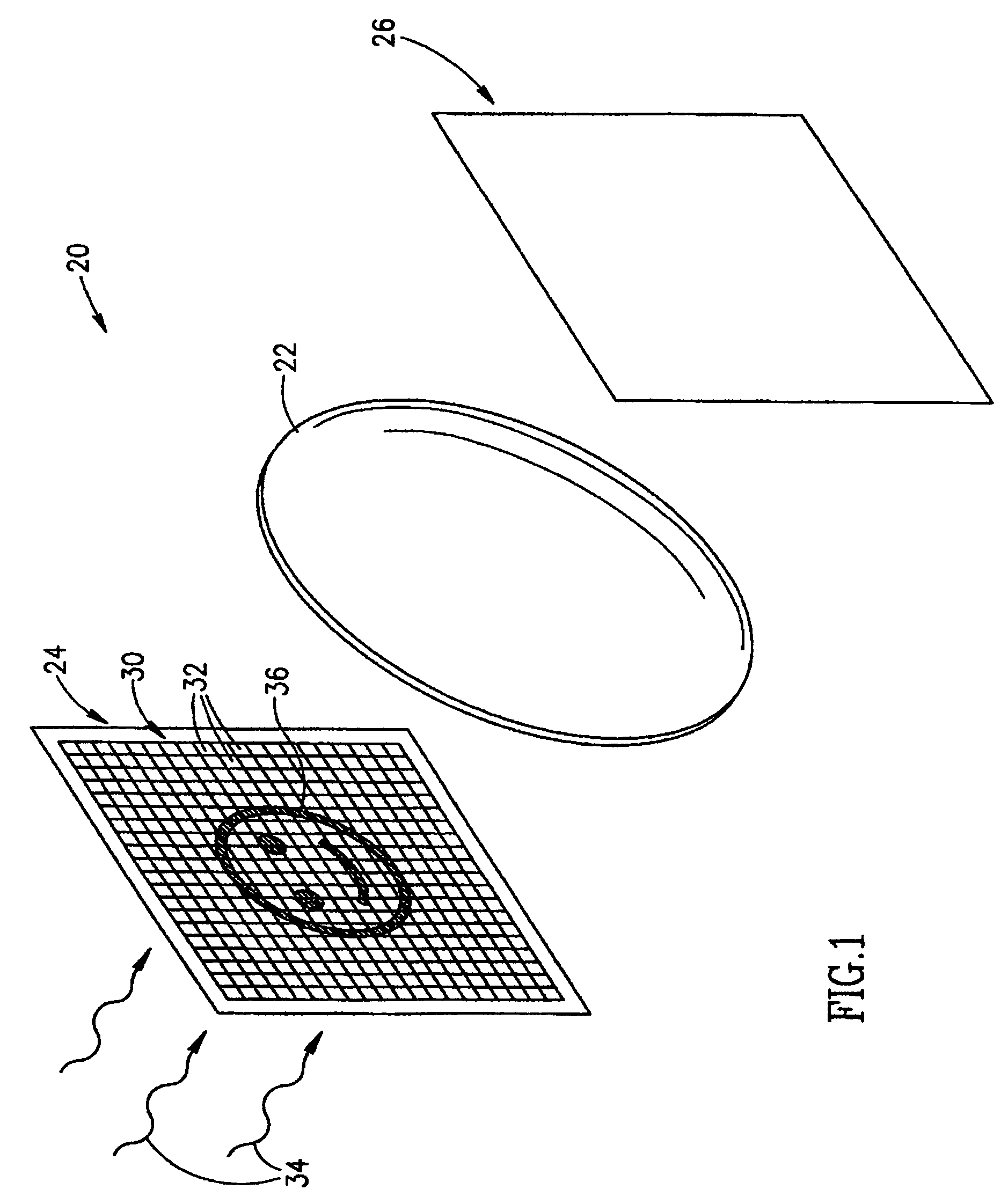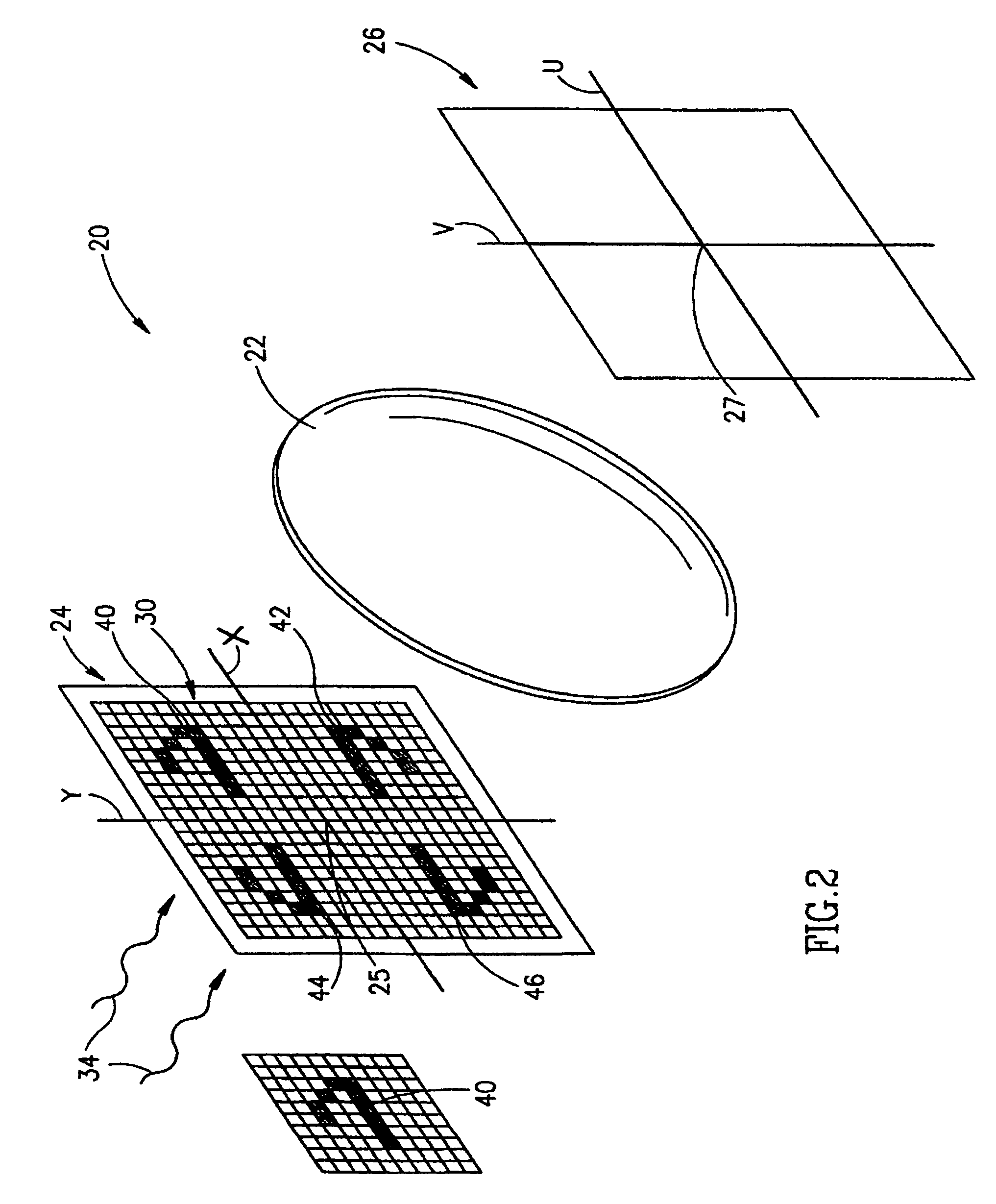Phase extraction in optical processing
a phase extraction and optical processing technology, applied in the field of optical methods and apparatuses, can solve the problems of affecting all real linear transformations, most light detectors are generally sensitive,
- Summary
- Abstract
- Description
- Claims
- Application Information
AI Technical Summary
Benefits of technology
Problems solved by technology
Method used
Image
Examples
Embodiment Construction
[0049]In the following discussion an embodiment of the present invention is described in which a real linear transform performed by an optical processor is a cosine transform. The optical processor uses the Fourier transform properties of converging lenses whereby a converging lens transforms an image into its Fourier transform, to generate a cosine transform of an image. The Fourier transform properties of lenses are described in “Introduction to Fourier Optics” by J. W. Goodman, McGraw Hill-Hill Companies, second edition Copyright 1996.
[0050]FIG. 1 schematically shows an optical processor 20 that functions to transform images into their Fourier transforms according to prior art. Optical processor 20 comprises a converging lens 22, an input plane 24 and an output plane 26. Input and output planes 24 and 26 are coincident with focal planes of lens 22. It is well known that lens 22 can be used to generate an image on output plane 26 that is a Fourier transform of an image on input pl...
PUM
 Login to View More
Login to View More Abstract
Description
Claims
Application Information
 Login to View More
Login to View More - R&D
- Intellectual Property
- Life Sciences
- Materials
- Tech Scout
- Unparalleled Data Quality
- Higher Quality Content
- 60% Fewer Hallucinations
Browse by: Latest US Patents, China's latest patents, Technical Efficacy Thesaurus, Application Domain, Technology Topic, Popular Technical Reports.
© 2025 PatSnap. All rights reserved.Legal|Privacy policy|Modern Slavery Act Transparency Statement|Sitemap|About US| Contact US: help@patsnap.com



